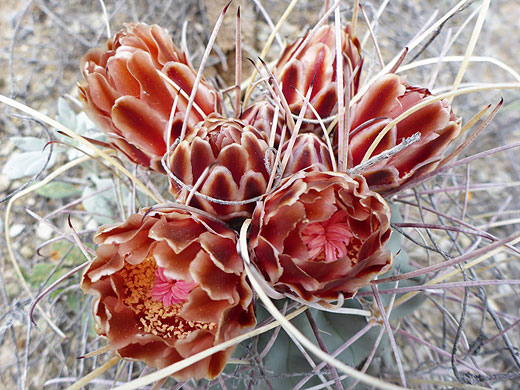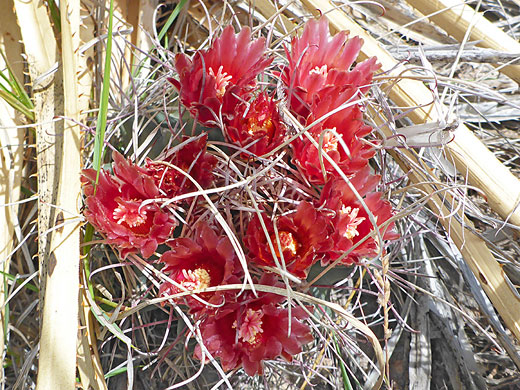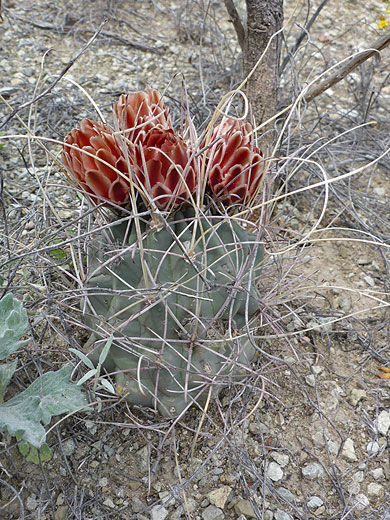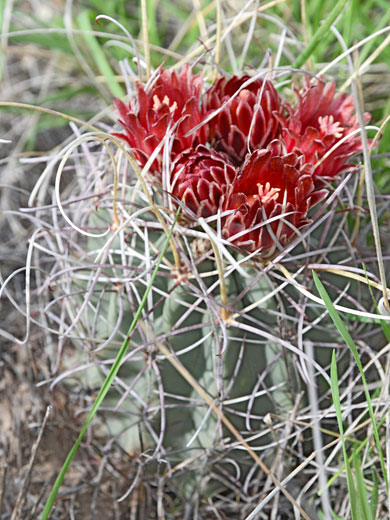Scientific name:
Glandulicactus uncinatus
Common name:
Chihuahuan fishhook cactus
Range:
South New Mexico and west Texas
Form:
Unbranched cylinders, usually up to 5 inches tall and 3 inches across; sometimes larger
Habitat:
Grassland, scrubland, hillsides
Flowers:
Brownish red to orange, blooming March to May, and sometimes again in late summer

Distribution map for glandulicactus uncinatus
The distinctive-looking glandulicactus uncinatus cactus, the only US species of this genus, has unusually long central spines (numbering one to four), the main one up to 5 inches in length, curved at the tip, and colored pale yellow. The five to ten radial spines are more reddish, and the lower three are also hooked, this being a characteristic feature of the genus. Spine clusters grow from broad tubercles, and are arranged along nine to 13 vertical ribs. The upper part of the tubercle is grooved, from the areole to the stem, and the grooves contain short woolly hairs. The areoles are well spaced, up to one inch apart, and the greyish green stem is clearly visible below the spines.
The deep red flowers contrast greatly with the dull green stems. The overlapping tepals surround a group yellowish stamens and a pinkish-red stigma, divided into between ten and 14 lobes. Outer tepals have minutely fringed or toothed margins. The round or egg-shaped fruits, up to one inch across, are initially green, ripening to bright red.
As the common name implies, glandulicactus uncinatus is a species of the Chihuahuan Desert, from the central portion of south New Mexico to the Big Bend area of west Texas and along the Rio Grande to Del Rio, plus an isolated population in south Texas (Starr County). Glandulicactus is closely related to sclerocactus.
The deep red flowers contrast greatly with the dull green stems. The overlapping tepals surround a group yellowish stamens and a pinkish-red stigma, divided into between ten and 14 lobes. Outer tepals have minutely fringed or toothed margins. The round or egg-shaped fruits, up to one inch across, are initially green, ripening to bright red.
As the common name implies, glandulicactus uncinatus is a species of the Chihuahuan Desert, from the central portion of south New Mexico to the Big Bend area of west Texas and along the Rio Grande to Del Rio, plus an isolated population in south Texas (Starr County). Glandulicactus is closely related to sclerocactus.
All Contents © Copyright The American Southwest | Comments and Questions | Contribute | Affiliate Marketing Disclosure | Site Map







